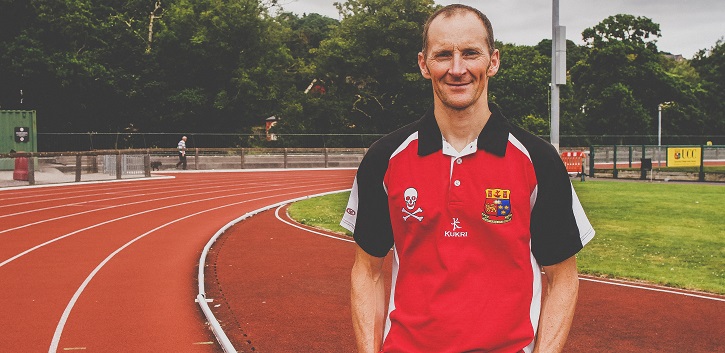Rio Olympics: The secrets to success

As the Rio Olympics near (August 5 to 21), UCC Exercise Physiologist Trevor Woods talks about how he prepares athletes for the Games.
From a young age I was always intrigued by top level athletes and players and what it took for them to get to that level…the dedication, the hard training, the natural talent, the opportunities, the training facilities, the list goes on.
But one profound ingredient I soon realised ranked up there as high as any were the support structures around that athlete, because let’s face it, no one can reach greatness without help. Of course, that expands beyond coaches and trainers to friends and family, but crucial roles are being played by sports scientists. Sports science is that field concerned with how the human body functions during exercise, as well as how sport and physical activity can promote health from a variety of perspectives. It incorporates a range of specialist areas such as physiology, psychology, medicine, anatomy and biochemistry, not to mention other areas which merge into it such as lifestyle management and nutrition.
Sports scientists are clearly growing in demand, with the ever-increasing focus within sports on achieving the best results possible. And this is never more applicable than to elite level performers, where fractions of a percent can separate a medallist from a non-medallist. I decided the career path I wanted to take early on was within this field of sport science and in particular I chose exercise physiology.
So what is the role of the exercise physiologist in modern day sport? Essentially they work closely with the athlete, the coach, the physiotherapist, and all other service providers to optimise the coaching and training objectives. My role within the UCC Department of Sport has included working with top level players and athletes across a range of sports.
Typically, I would provide an initial physiological assessment for baseline information and use this to help the athlete and coach formulate a periodised training plan. This screening importantly identifies the current strengths and weaknesses of the athlete, but can also help in profiling athletes/players as well as helping to understand the demands of their specific sport. And with regular on-going monitoring, the effectiveness of the training program can be quantified. The actual screening or testing itself varies depending on the particular sport, what is needed by a marathoner is very different to a soccer player. So with key performance determinants in mind I would aim to include those tests which give the coach and athlete the most useful information at that particular time of the training cycle.
With the Rio Olympics only around the corner, it’s a fact that all those athletes attending will have had sport science support along their journey to attain an optimum performance. Work I’ve done with Olympic-level runners and race walkers over recent years would typically entail lab or track-based screening tests measuring various parameters such as heart rate, blood lactate, and oxygen uptake during exercise to examine an athlete’s efficiency of movement as well as ability to use a high amount of oxygen. This information can be invaluable in identifying specific training zones based on heart rate and/or speed but more importantly can quantify change which has occurred since their previous screening…a great motivator if they see a positive change.
Progress seen depends largely on the stage the athlete is at of the training cycle, there can be increases in certain parameters during one block of training and not in others. The support I would give extends beyond that, be it nutritional advice, how to effectively shed body fat, how to optimise recovery from training and competition, how to keep the immune system in good shape, and so on. Both the marathon and the walking events are physically demanding endurance events and part of the success on the day comes down to appropriate pacing, whether that be 42km running or 50km of walking. Assessing those physiological parameters above gives the athletes that reassurance that they can sustain a particular pace.
Trying to mimic the conditions of the target event is also invaluable, both in giving the athlete the exposure to those conditions to aid in the acclimatisation process in the months before and confirming for them what pace they can realistically expect to maintain. I performed such work recently on an Olympic marathon runner wherein we aimed to replicate the conditions of Rio as precisely as possible in terms of the air temperature and humidity. With the use of a heater, a Burco boiler and a fan we were there!
Having the athlete run at their target race pace for half of the race distance enabled us to assess how certain physiological parameters would respond at the target race pace, namely blood lactate, heart rate response, rating of perceived exertion and fluid loss. This was invaluable as it reassured the athlete of what pace was realistic on the day and what was needed in terms of fluid intake to ensure that was possible. Any other similar athlete competing at an elite level and in particular the Olympic Games will have no doubt drawn upon such similar support and from across the various disciplines of sport science. The role of the exercise physiologist is just one piece of that huge jigsaw puzzle.
Rio #Olympics: UCC Exercise Physiologist Trevor Woods on preparing athletes: https://t.co/cfmVBrpEqt #Rio2016 pic.twitter.com/WdZYafP0sa
— UCC Ireland (@UCC) August 2, 2016
